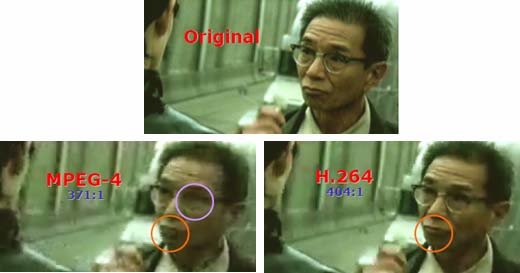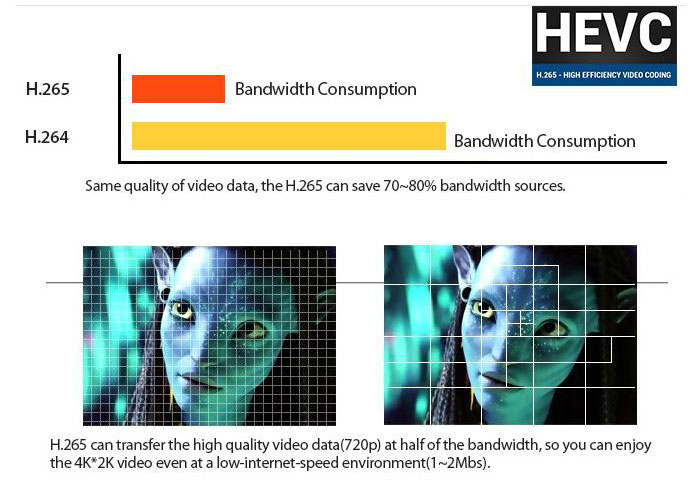H.264 (AVC)

Decoding H.264 (AVC): A Beginner’s Guide to Video Compression Technology
Introduction
In the dynamic realm of digital content, H.264 (AVC) stands as a pioneering force, shaping the way we experience videos across various platforms. This comprehensive guide aims to demystify H.264 (AVC), providing insights into its features, benefits, and unraveling its significance, particularly in the context of Internet Protocol Television (IPTV).
Understanding H.264 (AVC)
What is H.264 (AVC)?
H.264, also known as Advanced Video Coding (AVC), represents a video compression standard that excels in efficiently compressing and transmitting digital video content. This compression technology plays a pivotal role in delivering high-quality videos while optimizing bandwidth usage.

Features and Benefits of H.264 (AVC)
Efficient Compression
One of the standout features of H.264 (AVC) is its ability to compress video files without compromising quality significantly. This efficiency is crucial for streaming platforms, as it enables the delivery of high-definition content over networks with varying bandwidth capacities.
Versatile Compatibility
H.264 (AVC) boasts broad compatibility, making it suitable for a diverse range of devices and applications. From mobile phones to smart TVs, H.264 ensures seamless playback across various platforms, enhancing accessibility for users.
Reduced Bandwidth Consumption
The compression efficiency of H.264 (AVC) translates to reduced bandwidth consumption during video transmission. This is particularly advantageous for IPTV services, where optimizing bandwidth usage is essential for delivering a smooth and uninterrupted streaming experience to viewers.
The Role of H.264 (AVC) in IPTV
Optimizing Streaming Quality
In the realm of Internet Protocol Television (IPTV), H.264 (AVC) plays a vital role in optimizing streaming quality. The efficient compression ensures that IPTV providers can deliver high-definition content to viewers without straining network resources. This contributes to a seamless and enjoyable viewing experience, even in scenarios with varying internet speeds.
Enabling High-Quality Content Delivery
H.264 (AVC) aligns seamlessly with the goals of IPTV providers to offer high-quality content to viewers. The standard’s ability to balance compression efficiency with video quality ensures that IPTV subscribers can enjoy a diverse range of channels and on-demand content without compromising on visual fidelity.
Reducing Buffering and Enhancing User Experience
The reduced bandwidth consumption and efficient compression of H.264 (AVC) contribute significantly to minimizing buffering during IPTV streaming. This results in a smoother and more enjoyable user experience, especially in situations where network conditions may fluctuate.
How H.264 (AVC) Works
Compression Process Simplified
The compression process employed by H.264 (AVC) involves the removal of redundant information from video files while retaining essential details. This enables the creation of compressed files that maintain high visual quality, making it an ideal choice for IPTV providers seeking to deliver premium content to their audience.
Comparing H.264 (AVC) and H.265 (HEVC): Evolution in Video Compression
As we explore the realm of video compression, it’s essential to understand the advancements that H.265 (HEVC) brings compared to its predecessor, H.264 (AVC). While H.264 laid the foundation for efficient video compression, H.265 takes this to the next level. H.265, also known as High-Efficiency Video Coding (HEVC), introduces notable improvements in compression efficiency, enabling even higher-quality video at lower bit rates. This evolution is particularly significant for IPTV providers and streaming services, as H.265 allows for better utilization of available bandwidth, reducing the strain on networks while delivering stunning visual experiences. While H.264 remains a widely adopted standard, H.265 stands as the successor, poised to redefine the landscape of video compression and elevate the expectations for streaming quality in the digital age.

Conclusion: Embracing Efficiency in Video Compression
In conclusion, H.264 (AVC) emerges as a cornerstone in the landscape of video compression technology. Its efficient compression, versatile compatibility, and reduced bandwidth consumption make it a go-to choice for IPTV providers aiming to deliver high-quality content to viewers worldwide. As we navigate the ever-evolving digital landscape, the role of H.264 (AVC) in enhancing video experiences remains integral, ensuring that audiences can enjoy their favorite content seamlessly, regardless of the device or network conditions.



0 Comments